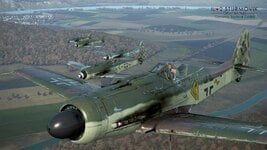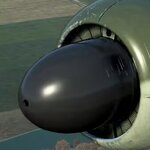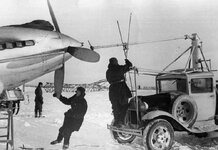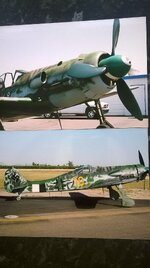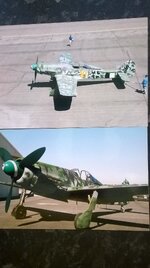Navigation
Install the app
How to install the app on iOS
Follow along with the video below to see how to install our site as a web app on your home screen.
Note: This feature may not be available in some browsers.
More options
You are using an out of date browser. It may not display this or other websites correctly.
You should upgrade or use an alternative browser.
You should upgrade or use an alternative browser.
About the Fw190 D9
- Thread starter noob2331
- Start date
Ad: This forum contains affiliate links to products on Amazon and eBay. More information in Terms and rules
More options
Who Replied?Crimea_River
Marshal
Welcome aboard. Good question!
我 notice there's a hole on the nose of the d9,As far as I know, the d9 doesn't have a shaft gun, so what is this?
Actually it is of a wrong shape in the pics you posted above. It was of more oval but not the round one. The pieces were the supports for the oil radiator sections. To make it lighter these were made of two plates pressed and welded. I'm not sure if these slots were the air intakes too though.
the pic source: the net.
Crimea_River
Marshal
- Thread starter
- #5
我 see.thank you for your answer!实际上,在您上面发布的图片中,它的形状是错误的。它是椭圆形的,但不是圆形的。这些部件是油散热器部分的支撑件。为了使其更轻,它们由两块板压制和焊接制成。我不确定这些插槽是否也是进气口。
View attachment 690515
View attachment 690516
View attachment 690517
图片来源:网络。
Wurger he's talking about the hole in the tip of the spinner I think.
Oh .. I misunderstood.
- Thread starter
- #7
I saw the picture above .so it's just a hole.right?Wurger he's talking about the hole in the tip of the spinner I think.
是的,that's what I wanted to ask
- Thread starter
- #9
IMHO that's a kind of an inspection hole. Also used for handling while attaching to or removing from its base on the engine shaft behind the prop. It could be the airintake for cooling the spinner interior and the front part of the engine shaft as well.


the source: the net.
the source: the net.
Here's a possibility.
Though the hole seems smaller than I'd expect, in frigid conditions, especially on the Eastern Front, Germans and Russians used start carts usually powered by diesel engine or truck power takeoff units. An appropriately angled shaft would be attached to the center of the prop, and the engine at least spun to lubricate and prevent destructive hydraulic locks. The couplers would kick the shaft back when the aircraft started.
These truck mounted units were developed during WWI and known as Hucks starters. They were used by all combatants in some form in WWII, Allied and Axis, including the Chinese and Japanese.
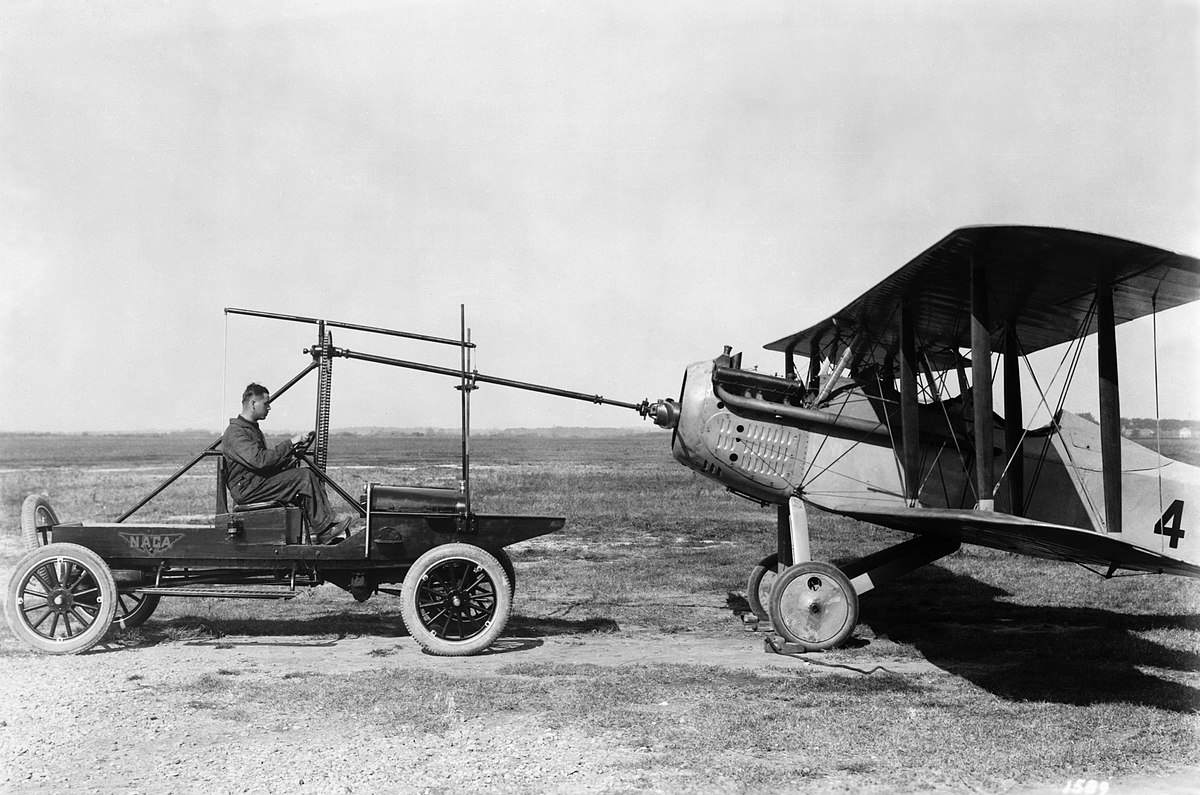
 en.wikipedia.org
en.wikipedia.org
This is similar in operation to starters employed on many racing engines, mostly drag racers or Indy cars, though they are smaller and can be carried by a person.
I've seen systems with both external couplers as in this IL-2 image and those accessed through a spinner hole.
This is a Model A built in Russia under license, and at least a million were produced at the GAZ plant ... known as GAZ AA.
Small bit of related errata: While most jet engines can use external start carts, they usually provide electrical or compressed gas assist to spin up the engines. The unique engines on the SR-71 must be spun up to such high speeds that a mechanical coupling is required. This is supplied by a cart with highly tuned Buick, then later Chevy V8s, with a linkage that would couple to the bottom of the engines.
Though the hole seems smaller than I'd expect, in frigid conditions, especially on the Eastern Front, Germans and Russians used start carts usually powered by diesel engine or truck power takeoff units. An appropriately angled shaft would be attached to the center of the prop, and the engine at least spun to lubricate and prevent destructive hydraulic locks. The couplers would kick the shaft back when the aircraft started.
These truck mounted units were developed during WWI and known as Hucks starters. They were used by all combatants in some form in WWII, Allied and Axis, including the Chinese and Japanese.

Hucks starter - Wikipedia
This is similar in operation to starters employed on many racing engines, mostly drag racers or Indy cars, though they are smaller and can be carried by a person.
I've seen systems with both external couplers as in this IL-2 image and those accessed through a spinner hole.
This is a Model A built in Russia under license, and at least a million were produced at the GAZ plant ... known as GAZ AA.
Small bit of related errata: While most jet engines can use external start carts, they usually provide electrical or compressed gas assist to spin up the engines. The unique engines on the SR-71 must be spun up to such high speeds that a mechanical coupling is required. This is supplied by a cart with highly tuned Buick, then later Chevy V8s, with a linkage that would couple to the bottom of the engines.
Attachments
These truck mounted units were developed during WWI and known as Hucks starters.
Good info, but I dunno about the orifice as a means of starting the aircraft, the spinner is only light gauge ali alloy, whereas the Hucks starter required a more substantial metal fitting than that hole. Take a look at this Il-10, although it's a little beat up, you can see the steel fitting in the apex of the spinner that enabled this and the Il-2 to be started with a Hucks starter.
I'm inclined to agree with the dual use of ease of extraction by hand once the fasteners holding it in place are removed, and cooling. The photos provided above support that hypothesis.
tommayer
Airman
Go to Greg's Aircraft YouTube. View his 190 vids. The hole in the Jumo 190's spinner is explained in one of them.我 notice there's a hole on the nose of the d9,As far as I know, the d9 doesn't have a shaft gun, so what is this?
Tony Kambic
Airman 1st Class
First of all, I went to Greg's Aircraft YouTube and could not find an explanation about the hole in the 190's spinner. Hopefully Tommayer can point me to what Youtube and what minute mark.Go to Greg's Aircraft YouTube. View his 190 vids. The hole in the Jumo 190's spinner is explained in one of them.
This hole had become a topic about 10 years ago at Udvar-Hazy on the Fw190F displayed there. I have done some research as to why a hole was in that spinner, given it was BMW powered, thus a radial and not for an engine mounted cannon.
If you study a number of German aircraft, many have that hole in the spinner, early He111, Do217, Ju87, Ju88, and probably more. None of those bombers would be configured for cannons. The He219 with DB603s, has spinners with a hole, and a supplied cap the covers the hole. The props on the He219 are VDM electric.
I could not find any documents in German about aircraft that spoke to the hole. My modest research came to two separate conclusions about the hole. One, it could be a manufacturing artefact, meaning how the metal was mounted and spun to form a spinner, and provided a quick easy means to any cannon mounting if necessary. Two, Gordon Gollob's report on test flying the Fw190 spoke about windscreen fouling by oil. The hole could have created some dynamic pressure within the spinner to force any oil so it would not foul the windscreen. Just suppositions, but so far nothing else. The hole is small so it would not be useful for any maintenance type procedures.
Tony
I could not find any documents in German about aircraft that spoke to the hole. My modest research came to two separate conclusions about the hole. One, it could be a manufacturing artefact, meaning how the metal was mounted and spun to form a spinner, and provided a quick easy means to any cannon mounting if necessary. Two, Gordon Gollob's report on test flying the Fw190 spoke about windscreen fouling by oil. The hole could have created some dynamic pressure within the spinner to force any oil so it would not foul the windscreen. Just suppositions, but so far nothing else. The hole is small so it would not be useful for any maintenance type procedures.
I'm inclined to agree with you, Tony, although it is unlikely it is for a possible through-the-hub cannon, it looks too narrow in the images above and there would be a decent lip or sleeve within, rather than just a hole at the apex of the spinner. Without such a thing, a very hot object travelling faster than the speed of sound that was ejected explosively through an orifice made of light aluminium alloy repeatedly, would warp and distort the spinner.
The P-51 has a similar hole in its spinner as well, though it typically is filled with a plastic plug. In the case of the Mustang's spinner, and probably most other aluminum spinners, that's where the mandrel is attached to turn the spinner disc during production.
Spitfire Steve
Airman
Your top photo is of the D-13 Yellow 10. This has a 30mm cannon through the spinner. I think you are right with description of the pressed plates, top and bottom.Actually it is of a wrong shape in the pics you posted above. It was of more oval but not the round one. The pieces were the supports for the oil radiator sections. To make it lighter these were made of two plates pressed and welded. I'm not sure if these slots were the air intakes too though.
View attachment 690515
View attachment 690516
View attachment 690517
the pic source: the net.
Attachments
Crimea_River
Marshal
I like the idea that it's a manufacturing artifact. Perhaps there was little aerodynamic benefit to fill the hole.
Snautzer01
Honourably banned
- 42,242
- Mar 26, 2007
correcting of the guns.
Users who are viewing this thread
Total: 1 (members: 0, guests: 1)

